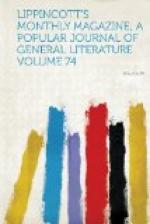Don Quijote’s readers are aware of the enormous popularity of the romances of chivalry, but they are apt to imagine that these represent a purely ideal state of things. This is undoubtedly the case as far as knight-errantry is concerned, but certain distinctive habits and customs of chivalry prevailed in Spain and elsewhere long after the feudal system and the earlier and original form of chivalry had passed away. One of the most curious instances of this survival of chivalry occurred in Spain in the first half of the fifteenth century, and after commanding the admiration of Europe furnished Don Quijote with an admirable argument for the existence of Amadis of Gaul and his long line of successors. The worthy knight had been temporarily released from his confinement in the Enchanted Cage, and had begun his celebrated reply to the canon’s statement that there had never been such persons as Amadis and the other knights-errant, nor the absurd adventures with which the romances of chivalry abound. Don Quijote’s answer is a marvellous mixture of sense and nonsense: the creations of the romancer’s brain are placed side by side with the Cid, Juan de Merlo and Gutierre Ouijada, whose names were household words in Spain: “Let them deny also that Don Fernando de Guerara went to seek adventures in Germany, where he did combat with Messer George, knight of the household of the duke of Austria. Let them say that the jousts of Sucro de Quinones, him of the Pass, were a jest.”
It is to these jousts, as one of the most characteristic episodes of the reign of John II. and of the times, that we wish to call attention.[4]
On the evening of Friday, the 1st of January, 1434, while the king and his court were at Medina del Campo and engaged in the rejoicings customary on the first day of the New Year, Suero de Quinones and nine knights clad in white entered the saloon, and, coming before the throne, kissed the hands and feet of the king, and presented him through their herald with a petition of which the following is the substance:
“It is just and reasonable for those who are in confinement or deprived of their freedom to desire liberty; and since I, your vassal and subject, have long been in durance to a certain lady—in witness whereof I bear this chain about my neck every Thursday—now, therefore, mighty sovereign, I have agreed upon my ransom, which is three hundred lances broken by myself and these knights, as shall more clearly hereafter appear—three with every knight or gentleman (counting as broken the lance which draws blood) who shall come to a certain place this year; to wit, fifteen days before and fifteen days after the festival of the apostle St. James, unless my ransom shall be completed before the day last mentioned. The place shall be on the highway to Santiago, and I hereby testify to all strange knights and gentlemen that they will there be provided with armor, horses and weapons. And be it known to every honorable lady who may pass the aforesaid way that if she do not provide a knight or gentleman to do combat for her, she shall lose her right-hand glove. All the above saving two things—that neither Your Majesty nor the constable Don Alvaro de Luna is to enter the lists.”




